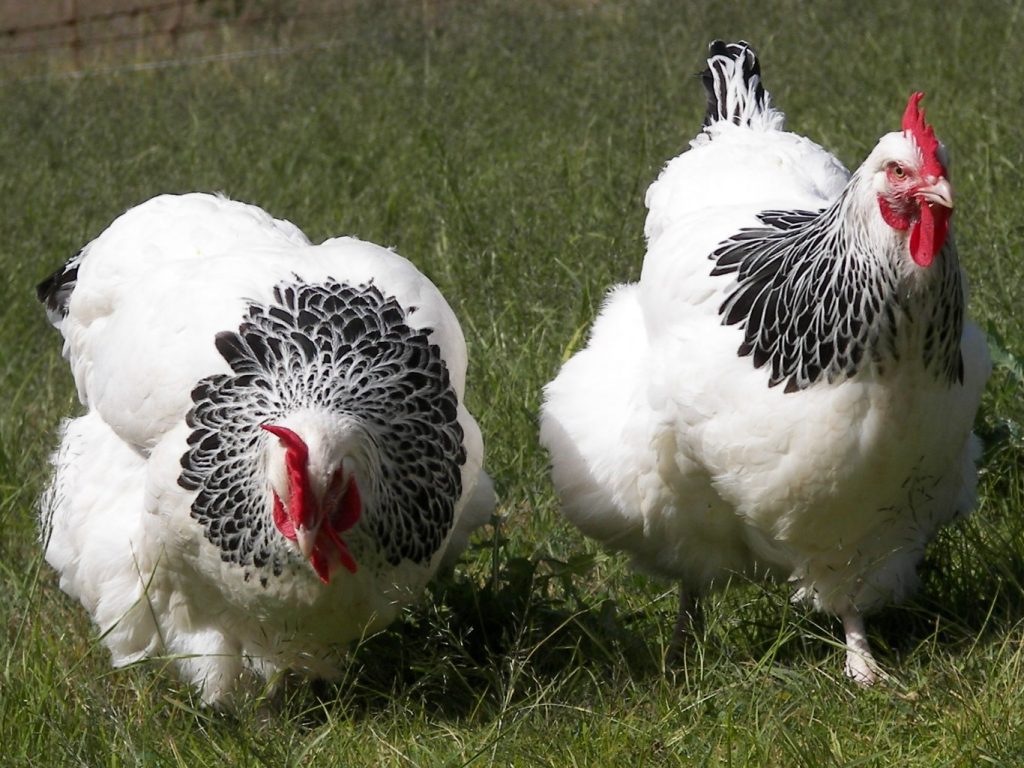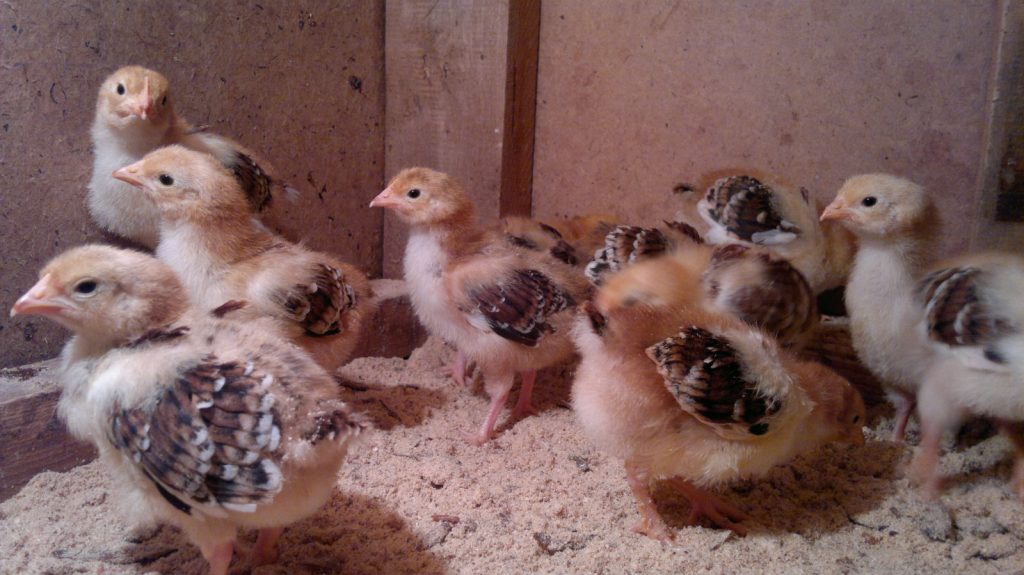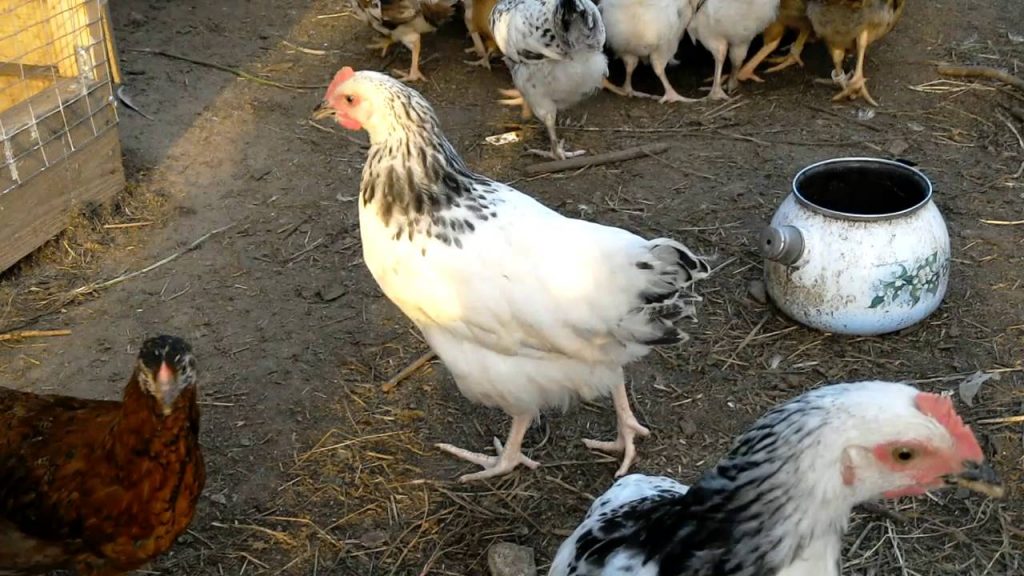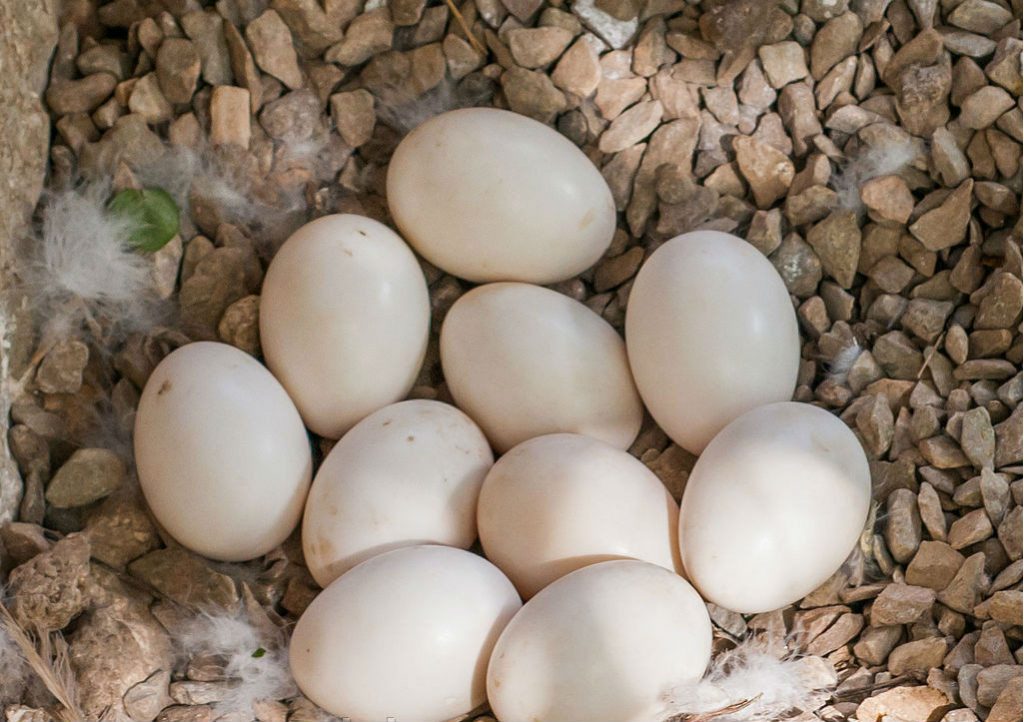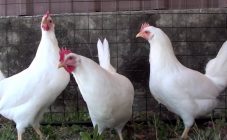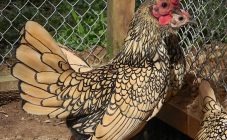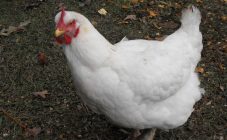This breed has a very ancient history. It has been known for almost two thousand years. Sussex chickens are used for egg production and as a meat breed. Caring for them does not require additional effort; this, combined with their advantages, has ensured their popularity throughout the world.
general information
This breed is one of the most famous. It is very ancient. The first mention dates back to 43 AD. At this time, the calico coloring of this breed appeared. Work on improving the breed continues to this day.
In its modern form, the Sussex breed of chickens was obtained in the UK, Sussex. The breeds of Orpington, Brahma, Dorking and White Cochin were involved in the breeding process. This happened in 1903. Here to this day there is a club of breeders of this breed.
One interesting historical fact is known. When King George ascended the throne, he was presented with a beautiful specimen of a rooster of this royal breed. Around the neck was a lilac feather necklace, the tail was purple, and the torso was snow-white.
The breed came to the Soviet Union in the sixties of the last century. Also, on the basis of this breed, the Adler silver and Pervomaisk varieties were bred.
Breed characteristics
This breed is versatile. It is bred for both eggs and delicious meat. It is delicate, tasty, and contains a lot of proteins.
The description of Sussex chickens says the following. Chickens of this breed have a characteristic appearance. The shape of the body can be called square. The wings and tail are small. The back, like the chest, is powerful and broad. The wings are set high and close to the body. The tail is moderately raised.
The plumage fits snugly to the body, it is soft and even.
They have a short neck with a dense layer of feathers and a small head. The eye color is reddish. The earlobes are red.
The scallop is of a leaf-like type and stands upright. The bird's beak is light in color, and the base is darker.
Legs are thick, pink in color. The lower legs are strongly muscled. Metatarsus are whitish, powerful.
During the year, they usually lay 160 to 190 eggs. The productivity of young chickens can reach up to 260 eggs in the same period. Eggs weigh from 60 to 100 g and have a beautiful oval shape.
Chickens begin to lay eggs after five and a half months. There are cases when young chickens lay two-yolk eggs. Eggs are white to light brown in color.
Sussex chickens, a day after birth, have a delicate yellow color. These birds are highly immune from birth. Plumage grows slowly.
This breed can be called early maturing. After 70 days, the weight of the young, as a rule, reaches one and a half kilograms.
The weight of adults can be:
- for chickens - from 2.7 to 3.2 kg;
- in roosters - 3.5-4.2 kg.
There are eight known colors of this breed:
- White.
- Colombian.
- Silvery.
- Red.
- Fawn.
- Brown.
- Chintz.
- Royal.
The last two species were developed between 1920 and 1940. It can be argued that the work on breeding Sussex chickens lasted a little less than two thousand years.
Of these, the Colombian chicken is the most popular.At the same time, in chickens, a white body is combined with black feathers at the ends of the wings and tail and the same beautiful black necklace on the neck.
The Sussex porcelain chicken breed was one of the last to be bred. It is another name for the calico variety.
Breeding features
Birds of this breed are unpretentious and easily adapt to local growing conditions. In winter, they are able to confidently endure frosts, however, under their influence, egg production may decrease. In winter, birds need additional lighting. Despite the fact that they tolerate winter conditions well, the house needs to be insulated at this time.
When growing, it is recommended to take compound feed for chickens for meat production. In this case, you need to ensure that the protein content in it is from 22% to 24%. Experts believe that the use of just such a feed can maximize the potential of this breed.
A good option is to feed them grated eggs and grains in the first weeks of life. In cases where the farmer does not have the opportunity to use compound feed, the young need to gradually introduce greens, boiled vegetables, semolina, and various food waste into the diet.
When the chicks grow up, it will be useful for them to eat potatoes, carrots, beets, yeast and greens. We need to provide them with the opportunity to drink clean water. For this purpose, drinkers are installed, the water in which must be changed daily.
For chickens, you need to prepare a box of sand. He is very important to them. Here they will not only clean the feathers, but also get rid of parasites. Sometimes it is customary to add ash to the sand.
Chickens are distinguished, although peaceful, but curious in nature. It is believed that the longer you walk them, the better the characteristics of the meat will be. At the same time, the birds at this time find food themselves.
When rearing, it is not recommended that more than 50 adults be kept in one house.
Chickens of this breed are good caring hens. Interestingly, there are breeds where chickens do not take enough care of their offspring and eggs are allowed to hatch for other birds. Sussex chickens are good for hatching extra eggs. For example, if you put turkey eggs, they will take care of them as if they were their own.
It is believed that it is possible to raise purebred chickens in cages if you give them enough space to live.
If the males are not performing well, they are given vitamin E and some selenium, prepared as a drink.
When raising, it is important to provide the chickens with good lighting for the maximum time. This is especially important for them in the first weeks of life. It is recommended to provide round-the-clock lighting during this time.
If homemade food is not used for feeding, it is not recommended to give cottage cheese to the chickens during the first two weeks. It will be helpful later to mix it with semolina or corn grits.
If the hens are raising chickens. This does not exclude the possibility that eggs will be laid at this time. Therefore, it is necessary to regularly inspect the nest.
When buying eggs of this breed, you should not take those that do not have the correct elliptical shape. Usually the hatchability percentage in such cases is small.
If the shell is thin or damaged, the chick, if it survives, will grow up sickly and thin. These eggs have little ability to retain moisture, which is vital for the growth of the chick.
There are two ways to start breeding birds of this breed:
- Purchase young growth for growing.
- Use the hens already on the farm and the eggs they have laid.
In the second case, it is recommended to incubate eggs in late spring. This is done so that the chicks have time to grow and get stronger during the warm season.
One hen is usually given 13-15 eggs for incubation. Given the massiveness of the representatives of this breed, there may be concerns about the safety of the hatched eggs. In fact, there is no reason for this - Sussex chickens are very attentive to their offspring and very careful when incubating eggs.
Breed advantages and disadvantages
This breed has inherent advantages:
- she is unpretentious when leaving;
- confidently tolerates the cold season;
- chicks have excellent survival;
- chickens of this breed have good egg production and a delicate taste of meat.
With insufficient care, egg production decreases and the taste of meat deteriorates.
These chickens combine ruggedness and resistance to adverse conditions with good performance and delicate meat flavor. These features make them attractive to choose from.
